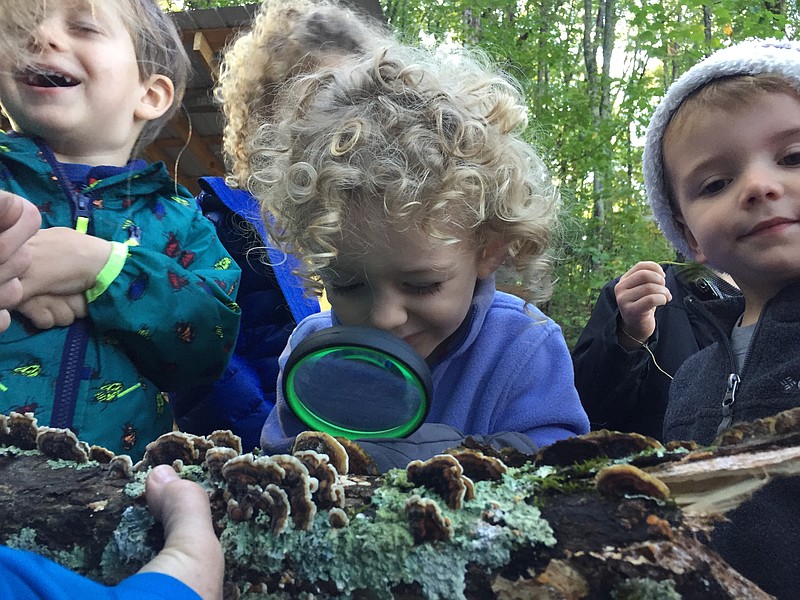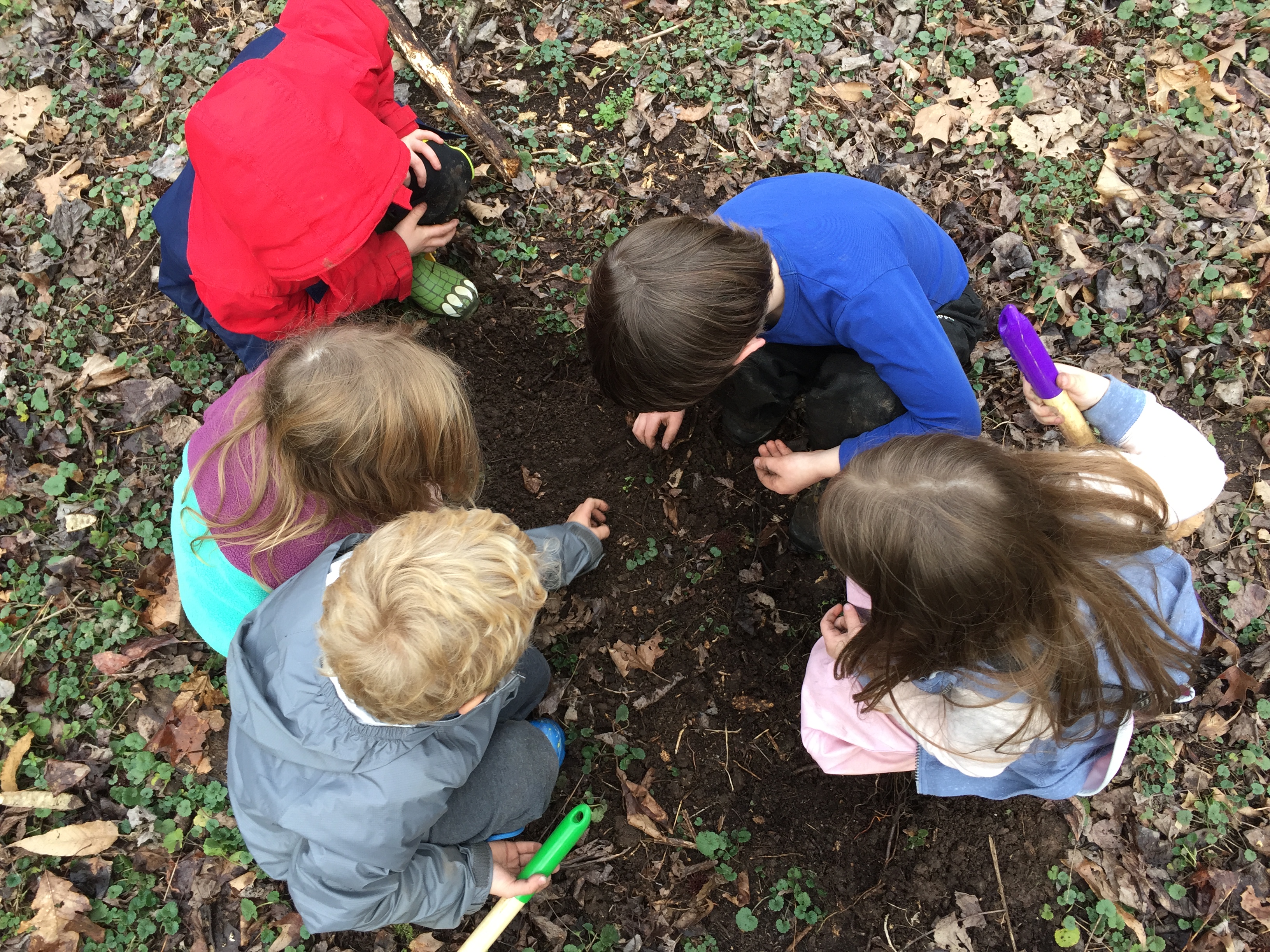A revival is stirring right now; a return to our roots, to our deepest nature.
As the coronavirus pandemic rages, more people are seeking solace among the plants and animals that cohabitate the Earth with us. Time itself is stretching our perspective, allowing us to nurture a rediscovered relationship. Sheltering in place, we are living more closely attuned to the planet's natural rhythms, rather than hands moving across a clock face. Simple pleasures are replacing screen time in many homes as families enjoy the outdoors together.
In my neighborhood, a sweet sound is echoing through the trees from morning till nightfall - voices of children joyfully playing.
I believe these voices represent the greatest hope for the future health of planet Earth and its precious inhabitants. With schools closed, children are experiencing the outdoors as never before.
Today's children have been the most nature-deprived generation in human history, spending much of their lives confined within walls, eyes locked on screens in temperature-controlled, cushioned, artificial environments, insulated from the natural world. Their well-being has been compromised with staggering results, including serious physical, emotional, social and cognitive disorders.
This generation of children will be responsible for the stewardship of the Earth through the rest of the 21st century. The stakes could not be higher.
Time spent in nature helps children understand the world as large and complex, but also abundant with interconnections. As they grow a kinship with the natural world, children will instinctively want to care for it.
My romance with nature began at an early age hiking Rocky Mountain trails with my grandfather. But it came into full bloom during wilderness backpacking trips with my brother over the past two decades and as a college professor teaching leadership classes in the Boundary Waters Canoe Area. There, I was lulled to sleep each night with the loons' haunting melodies and the ancient rhythm of waves crashing on rocky shores. Each day in this magical place gifted me with new pleasures: quilts of lichens and mosses softening ancient granite boulders; air spiced with fir, spruce and pine; beavers carving paths on glassy water; northern lights dancing across inky skies and timber wolves howling at moonrise.
Nature and I became one during these encounters. Wilderness observations taught me to live simply and consume less. I saw that nature wastes nothing; it is constantly recycling. Armed with my new mantra - "The less I carry through life, the more I will enjoy the trip" - I always returned home inspired to savor every day with all of my senses, be more compassionate, build greater community with friends and family, and do everything possible to preserve and care for my home, Planet Earth.
Children also experience wondrous moments and lessons in nature. They hear the Earth speaking in many ways, small and large, and are instinctively attuned to its voice. They touch the land, digging in the soil, splashing in puddles and walking barefoot in rich, brown soil.
Over the past 40 years as a classroom teacher, outdoor educator, college professor, nature center director and now a forest kindergarten director, I have gained a unique perspective about how children develop a connection with nature. By observing thousands of children and adults exploring the natural world, I believe children become friends and eventually lovers of nature through several distinct behaviors, resembling the stages of a romance.
Exploration
As sensorial beings, children explore the world around them by searching, examining and probing. Mystery - everywhere in nature - is fueled by curiosity and becomes a hunt for hidden things: under leaves; inside bark; beneath a puddle; around a bend in the trail; high in the tree branches. Arm a child with a magnifying glass, bucket and shovel, and they will discover the world.
It is important that children develop a connection with nature in their own place - the backyard, a schoolyard, city park or farm - somewhere close by to visit on a regular basis. By spending time in the same place, they will learn about the plants, animals, humans and landforms that share that space.
In my own explorations over the years in my favorite outdoor space, I've become acquainted with individual rocks and trees. I know secret places: where deer make their way to the creek from the wooded mountainsides; the boulder whose large cleft provides shelter from unexpected rain showers; a stash of raspberry bushes full of blooms that will quickly become juicy, red treats. After heavy rains, I know exactly where water collects in puddles on the trail, where it creates miniature waterfalls down the mountainside and where vernal pools form under the forest canopy.
Inquiry
Discoveries abound in the natural environment as it is continually changing, often unpredictable and challenging. Inquiry involves deep focusing, and as children seek answers, they experiment to find novel solutions to problems.
Examples of this process occur when children observe water flow and then create obstacles to restrict or redirect it. Dam-building and bridge building often take place as children problem-solve these occurrences, and such inquiry fuels creativity.
Children are scientists as they follow leads to solve the mysteries discovered through exploration. They can learn to use the scientific method, forming hypotheses, testing, gathering data and drawing conclusions. An example might be the discovery of a burrow in the ground. What animal lives here? Children can gather clues, such as materials around the entrance of the burrow - fur, bits of shells or food, tracks and scat. They can measure the size of the opening and study the location of the burrow - is it near water, trees? With access to field identification guides or phone apps, they can find photos of burrows to help solve the question.
Wonderment
Wonderment and awe describe a spiritual, transcendent experience. It often reflects a recognition of the vast sublime-ness of the Earth, the universe and our place in it. These feelings may come unexpectedly or can occur during periods of silence or meditation. It may happen when children gaze at a beautiful landscape, look closely at a flower or catch a glimpse of a wild animal. Wonderment can be experienced in the silent woods, beside a rushing stream or listening to birds sing their morning chorus.
A sit spot is one way to encourage children to experience silent observation and reflection. Experiences of wonderment and awe are the beginning of spiritual development, during which time children begin to ponder the basic questions asked by people of every culture: What is the meaning of existence? Why am I here and what is my place in this world?
These questions take children beyond themselves to see the Earth as a rich tapestry of which they are a part. Typically, these experiences in early childhood are remembered throughout one's life and, some research suggests, contribute to stewardship of nature.
Unity
Unity is the ultimate realization of friendship with the Earth. True friendships are built upon mutual respect and love. Because friends love each other, they will do anything to protect and care for each other. They share each other's burdens and find ways to bring happiness to each other. If one friend is sick, the other comes to help. They are willing to sacrifice their own comforts if necessary for their friend.
Even very young children recognize the characteristics of a good friend as they interact with one another and with the adults in their lives. They learn to care for the plants and animals that are discovered in their nature space, and develop strong attachments to various trees and creatures there. This loving friendship leads children to learn how to live sustainably, in harmony with the Earth. Being in nature helps them to become peaceful inhabitants of the Earth.
I encourage you to join the nature revival. Explore the outdoors with your children. Look closely. Listen to what nature has to teach. Become lost in all its vastness and intricate beauty.
Friendship with nature is every child's birthright, and working together, we can ensure this gift is available to all.
Dr. Jean Lomino is the founder, director and lead trainer of the Forest School Teacher Institute. She is also the co-founder of Wauhatchie School, the first forest kindergarten in the Tennessee.

